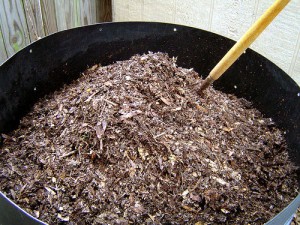When it to opening your pool up for the summer it can be a daunting task when you remove the winter cover and reveal a horrible looking green liquid. Don’t fear opening your pool is a relatively simple task. Just follow the steps below:
Remove winter cover and install the summer one. If required net out as many leaves and debris as your can. Top up the water levels if required so that the level is halfway up the skimmer entrance..
1. Get the pump running and leave running 24 hours per day for the first week or so while carrying out the procedure below. Once the pump is running backwash your filter a couple of times.
2. Chemicals. At the heart of every well maintained swimming pool is a good chemical balance. Throughout the year you’ll need to add different chemicals to the pool in order to keep the balance right. One of the best free resources out there for calculating how much of each type of chemical you need to add to your pool is The Pool Calculator.
3. Cyanuric Acid
First of all Test Your Cyanuric Acid (CYA) levels. CYA is often referred to as Stabalizer or Conditioner. An ideal level to maintain is between 40-80. 100 is manageable however when you get up to 180ppm the effectiveness of any chlorine you add to your pool is taken away. If it is that high the only solution may be to drain a large % of the water from your pool and refill.
4. Adjust your pH level
Once your CYA level is in an acceptable range, adjust your pH so it is in the 7.4-7.6 range. If you pH is not at the correct level it can mean that any chlorine you add is not as effective as it would be, which may cause you problems as well as costing you to add more chlorine than necessary.
5. Shock the Pool
Next add a large shock of liquid chlorine and allow to circulate for 48 hours. After shocking the pool with liquid chlorine it is common for the water to a slightly milky colour. This is caused by the dead algae being suspended in the water. Don’t worry, with your pump on 24/7 you filter should clear up the water after a couple of days.
6. Kill the Algae
If the pool is still green add 2 x large bottles of algecide and allow circulate for 3-4 days.
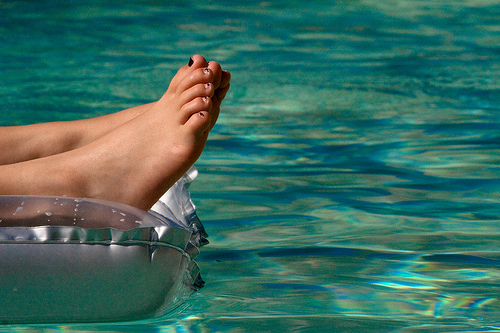
Opening your Swimming Pool
image by titlap
7. Brush it down. Once the pool water is reasonably clear thoroughly clean the water by brushing the walls and floor then vacuuming thoroughly.
8. Adjust the water level. Top up the level of the water to be covering the skimmer hole sufficiently.
9. Check Regularly. Test the water and adjust the chlorine and pH levels to properly balance the chemistry of your pool.
Tips to Opening a Green Pool
If you follow the above procedure opening your pool should be pretty straightforward. However if your swimming pool was green to start with the process may not be so straightforward.
If the pool water is green it means there is a lot more algae in the water than when it is clear. As stated above after shocking the green pool with chlorine it will most likely go a milky/green colour. This tells you that the algae has been killed. If there is lots of dead algae suspended in your water your swimming pool filter may not be able to remove it all.
If the pool isn’t clearing after 36 hours try switching the pump off and allow the water to settle for a few hours. Then carefully vacuum any debris that settles on the bottom of the pool straight to waste (not through the filter). By doing this you should remove the majority of debris in the water enabling your filter to deal with the remainder. You may need to repeat this vacuum to waste procedure a few times.
Another thing to try at this stage is to add a water clarifier or flocculant to the water. Most pool chemical shops sell different versions of these. They work by sticking the very small debris particles together, enabling the pools filter to catch them more easily.
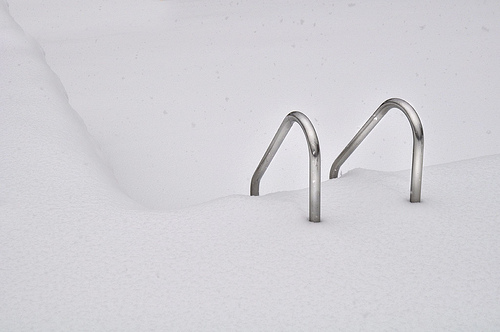
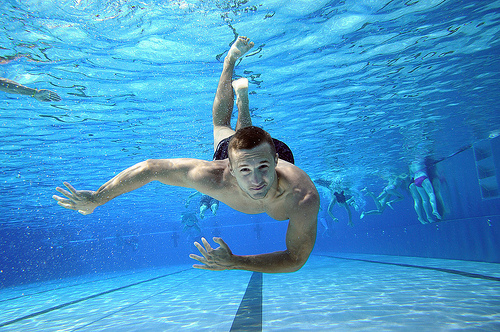
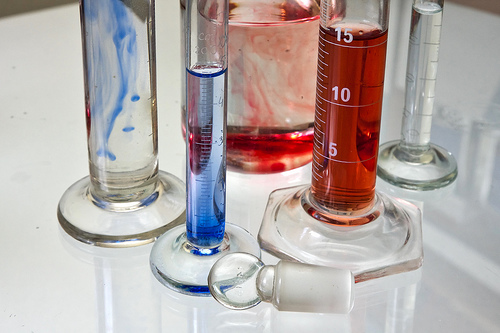 image by
image by 